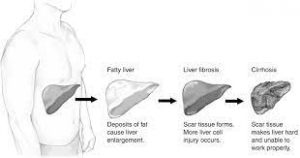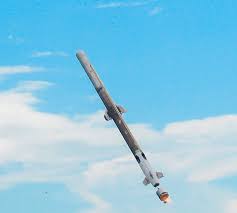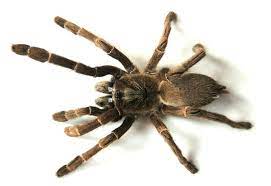Today’s Current Affairs: 6th Oct 2023 for UPSC IAS exams, State PSC exams, SSC CGL, State SSC, RRB, Railways, Banking Exam & IBPS, etc
Table of Contents
Non-Alcoholic Fatty Liver Disease:

Recent research revealed that Non-alcoholic fatty liver disease (NAFLD) is intrinsically linked with personality disorders.
- Non-Alcoholic Fatty Liver Disease (NAFLD) is the term for a range of conditions caused by a buildup of fat in the liver.
- This buildup of fat is not caused by heavy alcohol use.
- When heavy alcohol use causes fat to build up in the liver, this condition is called alcohol-associated liver disease.
- Two types of NAFLD are nonalcoholic fatty liver (NAFL) and nonalcoholic steatohepatitis (NASH).
- People typically develop one type of NAFLD or the other, although sometimes people with one form are later diagnosed with the other form of NAFLD.
- NAFL is a form of NAFLD in which you have fat in your liver but little or no inflammation or liver damage.
- NAFL typically does not progress to cause liver damage or complications.
- However, NAFL can cause pain from enlargement of the liver.
- NASH is the form of NAFLD in which you have inflammation of the liver and liver damage, in addition to fat in your liver.
- The inflammation and liver damage of NASH can cause fibrosis, or scarring, of the liver.
- NASH may lead to cirrhosis, in which the liver is scarred and permanently damaged. Cirrhosis can lead to liver cancer.
Very Short-Range Air Defence (VSHORAD) Missile System:

The Indian defence establishment recently initiated a tender for the procurement of 30 units of the indigenous Very Short-Range Air Defence (VSHORAD) missile system.
- Very Short-Range Air Defence (VSHORAD) missile system is a Man Portable Air Defence System (MANPAD) specially designed to counter low-altitude aerial threats over short distances.
- These are short-range, lightweight, and portablesurface-to-air missiles that can be fired by individuals or small groups.
- It has been designed and developed indigenously by DRDO’s Research Centre Imarat (RCI), Hyderabad, in collaboration with other DRDO laboratories and Indian industry partners.
- The use of VSHORAD missiles in India is primarily by the Indian Army.
- It is designed to provide short-range air defence capabilities to protect ground forces and critical assets from aerial threats, including helicopters and low-flying aircraft.
- The missile incorporates many novel technologies, including a Dual-band IIR Seeker, a miniaturised Reaction Control System, and integrated avionics.
- It is propelled by a dual-thrust solid motor.
- The missile and its launcher were designed by the DRDO to be portable, which enables their quick deployment over difficult terrain.
Autonomous Weaponised Boat Swarms:

The Indian Navy has recently given accordance of necessity (AON) approval for 12 autonomous weaponised boat swarms, which have been developed by Pune-based Sagar Defence Engineering.
- The agreement between the Indian Navy and the organisation marks the 50th contract awarded under the SPRINT program.
- Autonomous Weaponised Boat Swarms are strategically designed for naval tactics, employing a coordinated deployment of numerous small unmanned boats to overwhelm an adversary’s naval defenses.
- They are equipped with a variety of weapons and sensors that are capable of remote or autonomous operation.
- They are equipped with an integrated system capable of executing a variety of naval and security missions, such as littoral/ODA Patrol, High-Speed Interdiction, Coastal Surveillance, Local Naval Defence, Constabulary Operations, C4ISR, Medium-Sized Unmanned Surface Vessel, and Low-Intensity Maritime Operations (LIMO).
Haploclastus Nilgirinus : Species Of Tarantula

Researchers said that the Haploclastus nilgirinus a species of tarantula could be under threat from habitat loss and climate change.
- Haploclastus nilgirinus is an elusive Nilgiri large burrowing spider and a venomous species of tarantula.
- It is endemic to the Nilgiris hills of Western Ghats.
- It shows sexual dimorphism, the males are much smaller than the females.
- It is threatened by the illegal trade in wildlife as well as by climate change,
- Tarantulas are a type of large, hairy spider belonging to the family Theraphosidae.
- There are over 900 species of tarantulas found all over the world, except for Antarctica.
Platypus : New Research

New research revealed that platypuses are disappearing from waterways after the Black Summer bushfires swept across eastern Australia in 2019–20.
- Platypus is a duck-billed, beaver-tailed, otter-footed, egg-laying mammal.
- It is a small species of semi-aquatic mammal indigenous to the eastern coast of Australia.
- They are solitary animal that despite occupying overlapping home ranges, only comes together during the breeding season.
- They are nocturnal hunters.
- They are found in freshwater systems from tropical rainforest lowlands and plateaus of far northern Queensland to cold, high altitudes of Tasmania and the Australian Alps.
- Conservation status
- IUCN: Near Threatened
Methane Emissions In Livestock And Rice Systems : FAO Report

A recent Food and Agriculture Organization (FAO) report, titled “Methane Emissions in Livestock and Rice Systems,” highlights the significant climate impact of methane emissions from livestock and rice paddies.
- Released during FAO’s inaugural ‘Global Conference on Sustainable Livestock Transformation’ in September 2023, the report emphasizes the importance of reducing methane emissions in achieving the Paris Agreement’s goals, as noted in the Intergovernmental Panel on Climate Change’s Sixth Assessment Report.
Key Findings from the Report:
- Ruminant livestock and manure management contribute to approximately 32% of global anthropogenic methane emissions.
- Rice paddies account for an additional 8% of methane emissions.
- Besides agrifood systems, other human activities that generate methane emissions include landfills, oil and natural gas systems, coal mines and more.
- Among ruminants, cattle are the highest daily emitters of methane, followed by sheep, goats, and buffalo.
- Ruminant meat and milk are significant protein sources, and global demand for animal products is expected to rise by 60-70% by 2050.
- Report focuses on improving feed to reduce methane emissions by enhancing feed efficiency.
- This involves increasing nutrient density, and feed digestibility, altering rumen microbial composition, and selectively breeding animals with negative residual feed intake and smaller metabolic body weight.
- Enhanced feed efficiency boosts animal productivity per unit of feed, potentially increasing farm profitability based on feed costs and meat/milk revenues.
Measles : Significant Rise

There has been a significant spike in measles cases and fatalities in Delhi, attributed to under-reporting of cases during the Covid-19 lockdowns in the previous years.
- The Covid-19 lockdowns in 2020 and 2021, the focus and resources were primarily directed towards managing the pandemic, leading to weakened surveillance for measles and other diseases, contributing to measles cases, along with challenges related to vaccine acceptance, even among some affluent segments of society.
- Measles virus is an enveloped, ribonucleic acid virus of the genus Morbillivirus.
- Measles is highly contagious, and an infected person will often transmit the virus to over 90% of unprotected close contacts.
- The virus infects the respiratory tract, then spreads throughout the body. Measles is a human disease and is not known to occur in animals.
- Measles can be entirely prevented through a two-dose vaccine and has been officially eliminated in many countries with advanced healthcare systems.
- No specific antiviral treatment exists for measles virus.
- Severe complications from measles can be avoided through medical care that ensures good nutrition, adequate fluid intake, and treatment of dehydration.
- Routine measles vaccination for children, combined with mass immunization campaigns in countries with high case and death rates, are key public health strategies to reduce global measles deaths.
National Turmeric Board : Established

The Government of India has established the National Turmeric Board.
- As India is the world’s largest producer (75% of global turmeric production), consumer, and exporter of turmeric, this move aims to enhance the development and expansion of the turmeric industry within the country.
- The Board will consist of a Chairperson appointed by the Central Government, members from key government departments including the Ministry of AYUSH, Departments of Pharmaceuticals, Agriculture & Farmers Welfare, Commerce & Industry of the Union Government, along with rotating senior State Government representatives from three states.
- The Board is expected to help develop and grow the spice market in India, which controls over 62% share of the turmeric world trade.
- The largest producing states of Turmeric are Maharashtra, Telangana, Karnataka and Tamil Nadu.
- With its strategic approach, it aspires to propel turmeric exports to a staggering USD 1 Billion by 2030, ultimately benefiting both growers and consumers.
Amazon River Dolphins : Death

The deaths of 120 river dolphins in a tributary of the Amazon River are believed to be linked to a severe drought and high temperatures.
- Low river levels during the drought have led to water temperatures that are harmful to the dolphins.
- The Amazon River dolphin (Inia geoffrensis) is a species of toothed whale that lives in the rainforest rivers of South America. They are also known as the boto, bufeo, or pink river dolphin.
- Known for their striking pink colour, are a unique freshwater species in South America and face vulnerability due to slow reproductive cycles.
Nobel Prize In Literature 2023:

The Nobel Prize in Literature 2023 was awarded to Jon Fosse, “for his innovative plays and prose which give voice to the unsayable”.
- The Nobel Prize in Literature is awarded by the Swedish Academy, Stockholm, Sweden.
- The Nobel Prize amount for 2023 is set at Swedish kronor (SEK) 11.0 million per full Nobel Prize.
- Jon Fosse, born in 1959, is widely considered one of the most important writers of our time. For almost forty years he has written novels, plays, poems, stories, essays, and children’s books.
- His award-winning work has been translated into more than fifty languages, and his plays have been staged over a thousand times all over the world.




